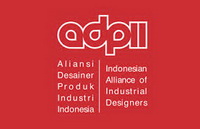Perancangan produk fungsional berbahan limbah kayu sisa produksi tempat air kemasan gelas
Abstract
Keywords
Full Text:
PDFReferences
Ahyari, A. (2002). Manajemen Produksi dan Pengendalian Produksi. BPFE.
Barati, B., Karana, E., & Hekkert, P. (2019). Prototyping materials experience: towards a shared understanding of underdeveloped smart material composites. International Journal of Design, 13(2), 21–38.
Beatrice, A. E., Setiadi, S., Saraswati, D. K., & MT, S. S. (2018). Pemanfaatan Limbah Kayu Peti Kemas Sebagai Bahan Dasar Perancangan Aksesoris Interior Pengembangan Metodologi Penciptaan Seni Rupa dan Desain. Seminar Nasional Seni Dan Desain 2018, 57–63.
Eskak, E. (2000). Pemanfaatan Kayu Limbah Industri Mebel Untuk Penciptaan Karya Seni. Skripsi. S-1 Fakultas Seni Rupa. Yogyakarta: Institut Seni Indonesia.
Naimah, R. J., Hawinuti, R., Firdaus, M., & Gazalie, R. (2019). Pelatihan Pembuatan Furniture dari Bahan Limbah Kayu Pallet. Jurnal IMPACT: Implementation and Action, 2(1), 24–31.
Pasaribu, Y. M. (Ed.). (2020). Proyek Desain. Kementerian Pariwisata dan Ekonomi Kreatif RI-Deputi Bidang Kebijakan Strategis.
Pemerintah Republik Indonesia. (2014). Undang-undang Republik Indonesia Nomor 3 Tahun 2014 tentang Perindustrian.
Prasetya, R. D. (2015). Potensi Limbah Kayu Industri Mebel untuk Produk Home Accessories. Productum: Jurnal Desain Produk (Pengetahuan Dan Perancangan Produk), 1(1), 39–51.
Suprapto, V., Kusumarini, Y., & Tanaya, F. (2021). Perancangan produk interior modular berbahan upcycling kayu bekas palet. Productum: Jurnal Desain Produk (Pengetahuan Dan Perancangan Produk), 4(1), 77–86.
Sutanto, J., & Tedjokoesoemo, P. E. D. (2017). Upcycle Limbah Kayu Palet Jati Belanda Menjadi Wadah Modular Serbaguna untuk Anak-Anak (Studi Kasus: Kota Surabaya). Dimensi Interior, 15(1), 26–34.
DOI: https://doi.org/10.24821/productum.v4i2.4392
Refbacks
- There are currently no refbacks.
p-ISSN 2477-7900 | e-ISSN 2579-7328

This work is licensed under a Creative Commons Attribution 4.0 International License.
Like & Follow Us










